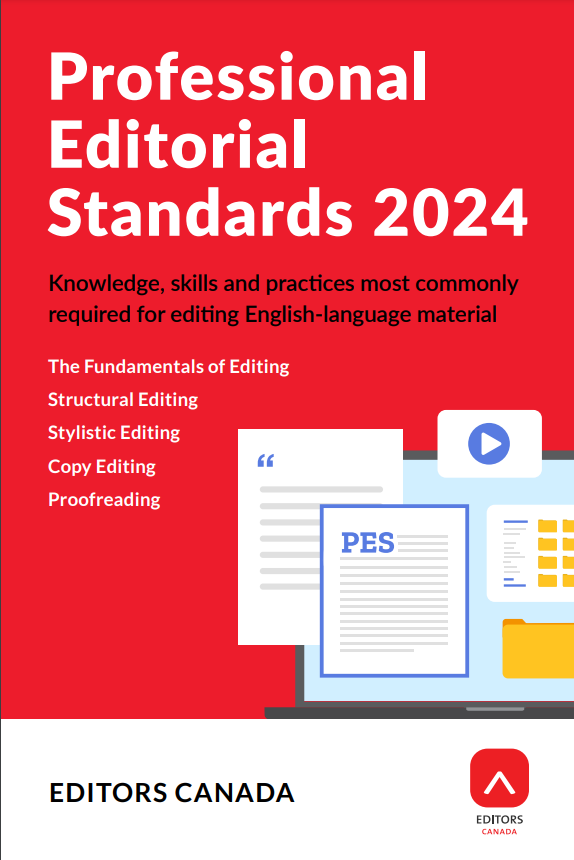Editors Canada's updated Professional Editorial Standards move our profession forward.
Managing decision fatigue: Some tools for editors
 It’s 4:00 p.m., you’ve been working since 8:30 a.m., and you’ve got to finish editing a document that’s due at the end of the day. You’ve taken a couple of short caffeine breaks, and you did have lunch, but you ate it while working, trying not to get too many crumbs in your keyboard. Suddenly you hit the wall: Should you start a new paragraph at “suddenly” or not? Should you put a comma after “suddenly” or not? Use “you” or “you’ve”? End with an exclamation point or period? And so on. Unable to decide, you a) leave it as is, b) rewrite the whole sentence, c) delete the whole sentence, or d) leave your desk in search of cookies, chocolate, or whatever other foods you’re not supposed to have, and proceed to consume the entire package before finding yourself even more indecisive.
It’s 4:00 p.m., you’ve been working since 8:30 a.m., and you’ve got to finish editing a document that’s due at the end of the day. You’ve taken a couple of short caffeine breaks, and you did have lunch, but you ate it while working, trying not to get too many crumbs in your keyboard. Suddenly you hit the wall: Should you start a new paragraph at “suddenly” or not? Should you put a comma after “suddenly” or not? Use “you” or “you’ve”? End with an exclamation point or period? And so on. Unable to decide, you a) leave it as is, b) rewrite the whole sentence, c) delete the whole sentence, or d) leave your desk in search of cookies, chocolate, or whatever other foods you’re not supposed to have, and proceed to consume the entire package before finding yourself even more indecisive.
Sound familiar? What you’re experiencing is decision fatigue, “the impaired ability to make decisions and control behavior as a consequence of repeated acts of decision-making.” An adult makes thousands of decisions every day (one study estimates an average of 35,000 decisions per day), starting from when to swing their legs out of bed in the morning to whether to watch yet another episode on TV or go to bed. And the science suggests that not only are there limits to our capacity to make decisions but our capacity is affected by other factors, including how much sleep we got the night before, how much stress we’re under, how much rest we’ve given our brain during the day, and our glucose levels.
Decision fatigue affects our behaviour, making us more passive or avoidant (i.e., choosing not to make a decision at all). For those of us who tend to procrastinate, that tendency is increased. Interestingly, decision fatigue can cause us to experience emotions more intensely: for example, things that normally cause mild frustration can become more irritating. It also affects our cognitive functioning, reducing our ability to reason and avoid bias, and causing us to take shortcuts and make poorer decisions. All these effects in turn can impact our self-control—for example, in relation to eating, drinking, shopping, Netflix binge-watching, and so on.
While we editors and writers rarely have to make life-and-death decisions in our daily work, pretty much everything we do involves decision making, from how to organize a text to which punctuation mark to use. One study even analyzed how decision fatigue affected manuscript acceptance at the American Journal of Gastroenterology.
So what can we do to make sure that the quality of our work as editors doesn’t suffer as a result of decision fatigue? Thankfully, there are plenty of practical strategies to choose from.
Sleep, rest, exercise, and eat well. Nothing new here. But just as these strategies are recommended for so many other aspects of our lives, they apply perfectly to avoiding decision fatigue. Increasing the amount and quality of your sleep (easier said than done for many of us) will help you start the day with more mental energy, rather than less. Taking regular breaks during the day will help your brain recharge. Use a timer to remind you; for example, for every 25 minutes of focused work, take 5 minutes to stand up and stretch, or get some fresh air, and after four or five of those cycles, take a longer break away from your desk, perhaps for some physical activity. And manage your eating—in whatever ways work best for you, including not consuming that whole package of cookies—to avoid glucose spikes and crashes, which have been shown to affect decision making.
Develop routines. As you may have heard, former US president Barack Obama systematically reduced his more mundane day-to-day decisions—for example, by limiting his clothing choices to grey or blue suits— to save mental energy for the more important decisions in his day. You don’t have to be president of the United States to use this strategy: develop daily routines that reduce the choices you have to make, and stick to them.
Plan to make key decisions early in your workday. For editors, this might be doing the heavy lifting (e.g., editing the most challenging parts of a document) in the morning and saving more mechanical tasks, like formatting, for when you begin to feel fatigued. It can also mean scheduling meetings and appointments later in the day so you bring your freshest mind to your editing work.
Use your personal style sheet if you start to flag. A previous WCEA blog post recommended developing a personal style sheet containing all those little editorial bugaboos that you have to look up or explain repeatedly. This can be especially useful when you start to feel fatigue and second-guess yourself.
Know your limits and plan accordingly. Once you recognize the signs of decision fatigue, you can determine how long you can reasonably work under normal conditions (i.e., assuming you’ve slept and eaten well, taken regular breaks, and exercised), and then plan accordingly. Again, especially for freelancers, this can be easier said than done. But if you know that five hours of focused editing or writing work is your daily maximum, not counting attending meetings, responding to email, and completing administrative tasks, you can use that as the basis for scheduling your projects, not just daily or weekly but over the longer term.
What strategies do you use to prevent decision fatigue from affecting the quality of your work?



